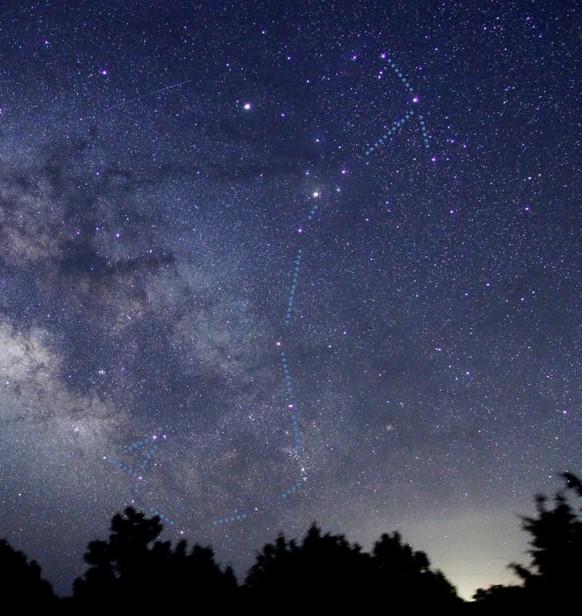70 Falmouth Street Portland, Maine 04103 43.6667° N 70.2667° W Altitude: 10 feet below sea level Founded January 1970 Julian Date: 2459334.18
2020-2021: CXX
THE DAILY ASTRONOMER
Thursday, April 29, 2021
May 2021 Night Sky Calendar Part II
WEDNESDAY, MAY 12: MOON NEAR THE PLEIADES

Unfortunately, one cannot merely look into the sky and see the Pleiades as it appears in the time-exposure photograph above. The Pleiades merely appears as a light patch just to the northwest of Hyades Cluster that forms most of Taurus' face. Tonight one MIGHT just glimpse the thin waxing crescent moon (1% illuminated) near the Pleiades well over in the western evening sky. Both the moon and star cluster will set by 9:00 p.m, making them rather difficult to observe.
WEDNESDAY, MAY 12: MOON NEAR VENUS (SILVER EVENT!!....SORT OF)

Ordinarily, a Venus-moon appulse would earn a silver or even gold rating. After all, the moon and Venus are the night sky's two brightest objects. However, this close approach occurs quite near the Sun (see image above) so that they'll be difficult to observe. No worries, however. June's Moon-Venus appulse will be much easier to see.
THURSDAY, MAY 13: MOON NEAR MERCURY (BRONZE EVENT!)
.png%22&N=skychart (1).png)
One might have found it difficult to observe the moon and Venus last night. Seeing Mercury and the waxing crescent moon (3% illuminated) will be easier tonight. See the moon just south of Mercury and well north of Orion low in the western evening sky. The two objects will set by 10:00 p.m.
SATURDAY, MAY 15: SEEKING SCORPIUS
Although we've just reached spring's mid-point, the summer constellations are already ascending in the post midnight eastern sky. Scorpius and its cohort Sagittarius are two prominent summer constellations one will see traveling through the southern sky.

Scorpius resembles a fish-hook, the tail of which just rises above the southern horizon. We are about as far north as an observer can be while still being able to see all of Scoprius. Mythologically, Scorpius killed Orion under the instruction of the moon goddess Artemis who wanted to prevent the reckless hunter from slaying all the world's animals. Both Scorpius and Orion were honored by being placed in the sky as constellations. However, to prevent them from ever fighting again, they are diametrically opposed to one another so that one will never see them in the sky simultaneously. Mid May is the time when Orion finally vanishes into the dusk. By the time Orion returns to the pre-dawn eastern sky in mid August, Scorpius will have become a prominent evening sky constellation.
SUNDAY, MAY 16: MARS 1.6 DEGREES SOUTH OF THE MOON
.png%22&N=skychart (4).png)
One will see Mars and the waxing crescent moon (17% illuminated) in the western evening sky tonight. They will both appear within the constellation Gemini the Twins, the last of the "winter constellations" to set. Both celestial objects will set in the northwest just after midnight.
MONDAY, MAY 17: MERCURY AT GREATEST EASTERN ELONGATION
Yes, it is somewhat confusing. When an inferior planet (one closer to the Sun than Earth) is at greatest western elongation, one will find it in the eastern early morning sky. Conversely, when the planet is at greatest eastern elongation. it will appear in the western early evening sky. One will find Mercury in the western evening sky tonight. The first world sets by 9:55 p.m.
WEDNESDAY, MAY 19: FIRST QUARTER MOON
We'll post the last part on Monday. In that article we'll explain why we didn't spend much time discussing this month's lunar eclipse. (Hint: because we truly won't see much of it at all.)
To subscribe or unsubscribe from the Daily Astronomer: